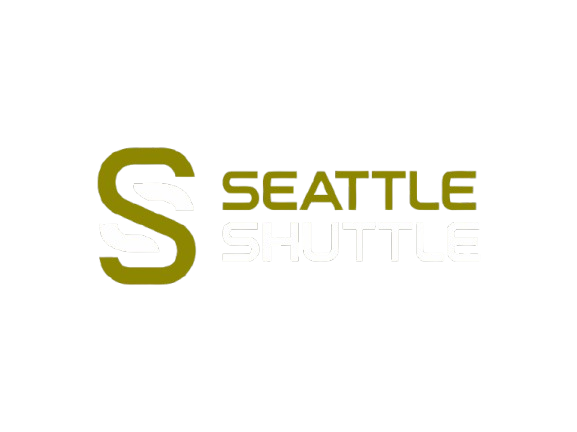- Home
- Fleet
- Standard Sedan Service
- Full Size Sedan Service
- Luxury Sedan Service
- Luxury Mini Van Service
- Luxury SUV Service
- Ford Transit Van Service
- Luxury Sprinter Van Service
- Coach Bus Service
- Shuttle Buses Service
- Lincoln Stretch Limo Service
- Chrysler Stretch Limo Service
- HUMMER STRETCH LIMO SERVICE
- CADILLAC ESCALADE STRETCH LIMO SERVICE
- Mercedes Sprinter Limo SERVICE
- Party Bus Limo SERVICE
- Tours
- Cruise
- Events
- Corporate
MENU
Seattle Weather and Transportation: How Professional Drivers Navigate Rain, Snow, and Traffic
Seattle’s reputation for rain is legendary, but the reality of Pacific Northwest weather is far more complex and nuanced than the stereotype suggests. From persistent drizzle to sudden downpours, occasional snow events to dense fog rolling in from Puget Sound, Seattle’s weather patterns create unique transportation challenges that can catch unprepared drivers off guard. For visitors and locals alike, understanding how weather impacts transportation—and why professional drivers provide crucial advantages during challenging conditions—can make the difference between a smooth journey and a stressful ordeal.
Understanding Seattle’s Weather Patterns
The Rain Reality
Seasonal Distribution: Seattle receives approximately 38 inches of rainfall annually, but this precipitation follows distinct patterns that impact transportation differently throughout the year:
October through April: The Wet Season
Consistent light to moderate rainfall
Occasional heavy downpours lasting several hours
Persistent overcast conditions affecting visibility
Wet roads creating slippery conditions for months at a time
May through September: The Dry Season
Minimal rainfall with occasional summer thunderstorms
Sudden weather changes that catch drivers unprepared
Dust and oil buildup on roads making first rains particularly hazardous
Clear conditions that can shift to rain within minutes
Beyond the Rain: Seattle’s Complete Weather Profile
Fog and Low Visibility: Seattle’s maritime location creates frequent fog conditions, particularly:
Early morning fog in valleys and near water bodies
Dense fog that can reduce visibility to less than 100 feet
Persistent low-hanging clouds that affect elevated roadways
Sudden fog banks that can appear with little warning
Wind Patterns:
Strong southerly winds during winter storms
Microbursts and gusty conditions in certain geographic areas
Wind impact on bridges, particularly affecting high-profile vehicles
Seasonal wind patterns that affect different parts of the city uniquely
Temperature Variations:
Microclimates throughout the metropolitan area
Bridge icing conditions when other roads remain clear
Elevation-based temperature differences affecting precipitation type
Urban heat island effects that create localized weather variations
The Snow Challenge: When Seattle Stops
Why Snow Is Seattle’s Transportation Kryptonite
Infrequent but Impactful: Seattle typically receives 4-8 inches of snow annually, but this infrequency creates unique challenges:
Most drivers lack experience with snow driving
City infrastructure optimized for rain, not snow removal
Steep terrain that becomes treacherous with minimal snow accumulation
Limited availability of snow tires and chains among general population
Geographic Amplification: Seattle’s topography amplifies snow challenges:
Hills that become impassable with just 1-2 inches of snow
Bridge surfaces that ice before other roadways
Elevation changes that create varying snow conditions within short distances
Drainage systems designed for rain that can’t handle snow melt effectively
Professional Driver Snow Expertise
Equipment Preparedness: Professional transportation services maintain snow-ready fleets:
All-weather tires designed for Pacific Northwest conditions
Chain requirements compliance for mountain passes
Vehicle traction control and stability systems
Emergency equipment including sand, chains, and communication devices
Route Knowledge: Experienced drivers understand Seattle’s snow hierarchy:
Which roads receive priority snow removal
Alternative routes when primary roads become impassable
Bridge and overpass locations that ice first
Elevation routes that remain more accessible during snow events
Real-Time Decision Making: Professional drivers monitor:
Current road conditions through multiple information sources
Weather radar for developing snow patterns
City transportation department updates
Real-time traffic and incident reports
Rain Driving: The Everyday Challenge
The Hydroplaning Risk
Surface Water Accumulation: Seattle’s rainfall patterns create specific hydroplaning risks:
Sudden heavy downpours overwhelming drainage systems
Oil and debris accumulation during dry periods creating slick surfaces
Worn roadway surfaces that don’t drain effectively
Construction zones with altered drainage patterns
Professional Mitigation Strategies: Experienced drivers employ specific techniques:
Speed reduction appropriate to surface water conditions
Following distance adjustments for reduced braking effectiveness
Tire maintenance ensuring optimal tread depth for water dispersion
Route selection avoiding known problem areas during heavy rain
Visibility Management
Multiple Visibility Challenges: Rain creates layered visibility problems:
Windshield fogging from temperature and humidity differences
Spray from other vehicles reducing rear and side visibility
Reduced headlight effectiveness in heavy rain
Reflection and glare from wet surfaces
Professional Equipment and Techniques:
High-quality windshield wiper systems maintained regularly
Defogger systems optimized for Pacific Northwest humidity
Premium lighting systems for improved visibility
Driver training for low-visibility navigation techniques
Traffic Pattern Disruptions
Weather-Induced Traffic Behavior
Driver Response Patterns: Seattle weather creates predictable traffic disruptions:
Significant speed reduction during first rains after dry periods
Rush hour extensions during any precipitation
Route changes as drivers avoid hills and bridges during snow
Increased accident rates during weather transitions
Professional Advantage: Experienced drivers understand these patterns:
Alternative route knowledge when main arteries slow down
Timing adjustments for weather-related delays
Communication with dispatch for real-time route optimization
Experience-based predictions of traffic flow changes
Geographic Weather Variations
Microclimate Navigation
Elevation Differences: Seattle’s varied topography creates distinct weather zones:
Capitol Hill and other elevated areas experiencing different conditions than sea level
Queen Anne Hill often shrouded in fog when other areas remain clear
West Seattle separated by water bodies with different weather patterns
Eastside locations across Lake Washington with distinct precipitation patterns
Professional Local Knowledge: Experienced drivers understand:
Which neighborhoods experience weather differently
How geography affects precipitation timing and intensity
Route adjustments needed for elevation-based weather variations
Microclimatic conditions affecting specific business districts and venues
Bridge and Water Crossing Considerations
Unique Challenges: Seattle’s numerous bridges create specific weather-related risks:
I-90 and SR-520 floating bridges affected by wind and fog
Elevated roadways that ice before surface streets
Wind tunnel effects on certain bridge approaches
Visibility challenges during fog and heavy rain
Professional Expertise:
Understanding of bridge-specific weather conditions
Alternative crossing routes when conditions deteriorate
Real-time monitoring of bridge conditions and restrictions
Experience with wind and visibility conditions on major crossings
Vehicle Maintenance and Preparation
Professional Fleet Standards
Preventive Maintenance: Professional transportation services maintain vehicles specifically for Pacific Northwest conditions:
Tire inspection and replacement schedules adapted to wet road wear patterns
Brake system maintenance accounting for frequent wet-weather use
Electrical system protection against moisture infiltration
Climate control systems optimized for humidity management
Seasonal Preparation:
Winter preparation including antifreeze, battery, and heating system checks
Summer preparation for sudden weather changes and air conditioning demands
Regular windshield wiper replacement and windshield treatment
Emergency equipment rotation and inspection
Technology Integration
Weather Monitoring Systems: Professional services utilize:
Real-time weather radar integration with dispatch systems
Road condition monitoring through multiple information sources
Traffic pattern analysis combined with weather data
Communication systems for driver-to-dispatch weather updates
Vehicle Technology:
GPS systems with real-time traffic and weather integration
Vehicle stability and traction control systems
Advanced lighting systems for visibility improvement
Climate control systems maintaining passenger comfort regardless of conditions
Emergency Preparedness and Response
Severe Weather Protocols
Service Continuity Planning: Professional transportation services maintain:
Emergency response procedures for severe weather events
Communication protocols for service disruptions
Alternative vehicle deployment strategies
Customer notification systems for weather-related delays
Driver Training and Certification:
Specialized training for Pacific Northwest weather conditions
Emergency response training for weather-related incidents
Ongoing education about seasonal driving challenges
Certification requirements for driving in various weather conditions
Customer Safety Priority
Risk Assessment: Professional drivers continuously evaluate:
Current road conditions versus service requirements
Weather forecast impact on planned routes
Alternative transportation options during severe conditions
Communication with customers about weather-related adjustments
The Professional Driver Advantage
Experience and Expertise
Local Knowledge Depth: Professional drivers develop expertise through:
Years of experience navigating Seattle weather conditions
Understanding of seasonal patterns and their transportation impacts
Familiarity with city infrastructure and weather response capabilities
Network communication with other professional drivers about real-time conditions
Continuous Education:
Regular training updates on weather driving techniques
Equipment training for weather-specific vehicle features
Safety protocol updates based on industry best practices
Local traffic pattern education for weather-related disruptions
Equipment and Vehicle Advantages
Superior Vehicle Specifications: Professional transportation vehicles feature:
All-weather tire requirements exceeding standard passenger vehicles
Enhanced safety systems including stability control and traction management
Climate control systems maintaining passenger comfort in all conditions
Emergency equipment and communication systems
Maintenance Standards:
Regular inspection schedules ensuring weather readiness
Preventive maintenance programs addressing weather-related wear
Equipment replacement schedules optimized for Pacific Northwest conditions
Emergency repair capabilities for weather-related issues
Making the Professional Choice
Seattle’s weather patterns create transportation challenges that go far beyond simple inconvenience. From hydroplaning risks during sudden downpours to complete traffic paralysis during rare snow events, Pacific Northwest weather demands expertise, preparation, and local knowledge that casual drivers often lack.
Professional transportation services provide crucial advantages during challenging weather conditions. Their combination of vehicle preparation, driver expertise, local knowledge, and emergency protocols ensures reliable service when weather conditions deteriorate. For business travelers who cannot afford weather-related delays, tourists unfamiliar with local conditions, or anyone prioritizing safety and reliability, professional transportation becomes not just convenient but essential.
The investment in professional transportation during challenging weather conditions pays dividends in safety, reliability, and peace of mind. When Seattle’s weather turns challenging—and it inevitably will—professional drivers provide the expertise and preparation necessary to navigate safely and efficiently through conditions that might strand or endanger less experienced drivers.
Navigate Seattle’s challenging weather conditions with confidence. Seattle Shuttle & Executive Car Service provides the professional expertise, weather-ready vehicles, and local knowledge necessary to ensure safe, reliable transportation regardless of Pacific Northwest weather conditions. Our experienced drivers and well-maintained fleet are prepared for rain, snow, fog, and everything in between.
READY TO BOOK YOUR RIDE? WE'RE AVAILABLE 24/7
Whether you need an early morning airport transfer, corporate transportation for your team, or a luxury ride for a special occasion—we're ready to serve you with fast booking, fixed-rate pricing, and reliable service.
Useful Links
Our Services
Helpful Links
Download The App




